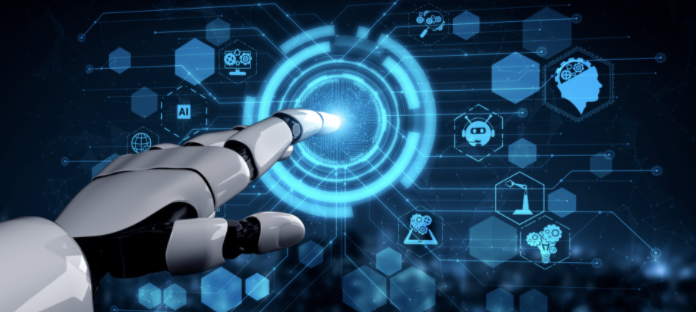
Instructor: Bernard Montaron, Fraimwork SAS
Level: Foundation
Duration: 16 hours
Format: this extensive and interactive course consists of presentations, (reading)
assignments, quizzes and several webinars with the instructor.
Next delivery dates: Monday 1 March - Friday 5 March 2021
| Date | Time | Description |
|---|---|---|
| 1 March 2021 | 09:00 - 10:00 CET | Webinar part 1 |
| 2 March 2021 | 09:00 - 10:00 CET | Webinar part 2 |
| 3 March 2021 | 09:00 - 10:00 CET | Webinar part 3 |
| 4 March 2021 | 09:00 - 10:00 CET | Webinar part 4 |
| 5 March 2021 | 09:00 - 10:00 CET | Team presentations |
Lectures and exercises will become available from 1 March 2021 as per the schedule above. You will have access to the course material until 1 April 2021. Make sure to complete all the requirements for the achievement of the certificate by this date.
Certificate
A certificate of completion will be available upon completion of all course requirements. After the end of the course, your certificate will remain available for download in your Profile page.
Brief course description:
This course starts with the story of AI from the 1950s to the AI revolution of the 2010s. Today’s AI business landscape and what’s happening in the oil and gas are reviewed. The basic concepts of Machine Learning are introduced, followed by a detailed presentation of neural networks (NN). NN used 25 years ago in the oilfield are discussed, then participants experiment a NN trained in 12 seconds to read handwritten digits. Deep convolutional NNs (DNN) are then studied and applications to salt mapping and fault detection in seismic data discussed and demo’ed. Finally, participant teams are asked to design DNNs and to define how to create the data sets for two oilfield projects: sweet spot detection in Bakken field, USA, and GWC prediction in seismic data of undrilled carbonate pinnacles offshore Central Luconia, Malaysia.
Course objectives:
Upon completion of this course, participants will have acquired detailed knowledge of what Deep Learning is exactly, how it works, and in which way it differs from traditional neural networks that have been used in the industry during the past 30 years. They will understand which domains this can be applied to and for what type of applications. They will also be aware of the main challenges, difficulties, and pitfalls when developing new AI applications. Finally, they will have seen demos of deep neural networks applied to E&P disciplines and will be able to evaluate how useful the technology could be for their own domain.
Participant profiles:
This course is intended for technical staff and managers interested to understand what Deep Learning is and how it can be applied to oilfield projects (all disciplines).
About the instructor: Dr. Bernard Montaron is CEO of Fraimwork SAS, Paris, France, and CTO of Cenozai Sdn Bhd, Kuala Lumpur, Malaysia. Two startups created in 2017 that are specialized in the application of AI to various domains, and provide services to oil and gas companies for exploration and production. In 2015-2017 he was Chief Geoscientist of Beicip Tecsol in Kuala Lumpur. Prior to this, Bernard Montaron worked 30 years for Schlumberger where he held a number of positions in R&D and Marketing. He has worked for the oil and gas industry in Europe, in the US, in the Middle East, in China, and Malaysia. Bernard was General Manager of the Schlumberger Riboud Product Center in Paris – Clamart, France (2002-2003) and he was VP Marketing of Schlumberger Middle East and Europe-Africa-Russia regions (2000-2001). Bernard holds a MSc degree in physics from ESPCI, Paris, and a PhD in Mathematics from University Pierre et Marie Curie, Paris. He has a Machine Learning certificate from Andrew Ng’s course (Stanford Univ./Coursera). Bernard received the best oral presentation award at the APGCE 2017 conference for his paper on “Deep Learning Technology for Pattern Recognition in Seismic Data – A Practical Approach”.
Dr. Bernard Montaron is CEO of Fraimwork SAS, Paris, France, and CTO of Cenozai Sdn Bhd, Kuala Lumpur, Malaysia. Two startups created in 2017 that are specialized in the application of AI to various domains, and provide services to oil and gas companies for exploration and production. In 2015-2017 he was Chief Geoscientist of Beicip Tecsol in Kuala Lumpur. Prior to this, Bernard Montaron worked 30 years for Schlumberger where he held a number of positions in R&D and Marketing. He has worked for the oil and gas industry in Europe, in the US, in the Middle East, in China, and Malaysia. Bernard was General Manager of the Schlumberger Riboud Product Center in Paris – Clamart, France (2002-2003) and he was VP Marketing of Schlumberger Middle East and Europe-Africa-Russia regions (2000-2001). Bernard holds a MSc degree in physics from ESPCI, Paris, and a PhD in Mathematics from University Pierre et Marie Curie, Paris. He has a Machine Learning certificate from Andrew Ng’s course (Stanford Univ./Coursera). Bernard received the best oral presentation award at the APGCE 2017 conference for his paper on “Deep Learning Technology for Pattern Recognition in Seismic Data – A Practical Approach”.
Course outline:
Part 1:
A little history of artificial intelligence (A.I.)
The AI revolution in the last ten years
Today’s AI business landscape
GAFAMs and free online AI software development tools
What’s happening with AI in the Oil & Gas business?
Linear Regression as an introduction to Machine Learning
Part 2:
A little more on linear regression
Neural Network basics
Logic gates (NOT, OR, AND) as neural networks… and implications
Understanding ML buzz words: gradient descent, backpropagation, generalization, etc.
The mathematics of NNs and ML (linear algebra)
Image classification/pattern recognition with a neural network (NN-DIGITS)
NN-DIGITS training demo
Part 3:
Discussion on NN from the past in the oilfield industry, and handwritten digit classification
The Deep Learning revolution: how did it happen?
A very complex NN: the human eye and the visual cortex
Introduction to deep convolutional NNs (CNNs)
How CNNs make it possible to develop a micro-paleontology ML software
Free download AI tools (ATOM, Keras, TensorFlow) running on a gamer laptop PC
NN/CNN demos with these tools using an online data set from Kaggle
Part 4:
Discussion on self-driving cars ML software, and adversarial attacks
Adversarial examples for the human brain: optical illusions and perception errors
Discussion on the salt classification paper
Important considerations on accuracy metric
Review of a CNN-based system for picking faults in seismic data
Software demo of “MyFault”
Introduction to part-5 teamwork exercises: do your own ML project
Part 5:
- Team exercises and presentations
